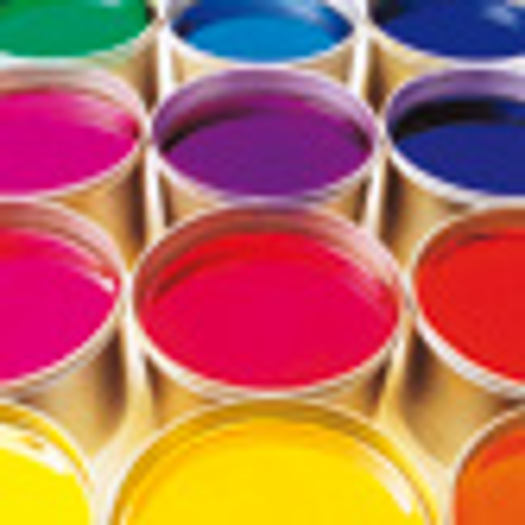Flexo inks are similar to gravure. When using flexographic inks, the viscosity is important to attain the best quality. There are a high number of pigments in flexo inks, which means they can be used for a wider range of applications.
The solvents used here are also important, the most regularly used types are ethylacetate and alcohol. Water can also be used, although this does not result in as strong a ‘bond’ to the substrate. However, in packaging, inks with water as the solvent are quite commonly used. Letterpress inks are very rarely used nowadays, with offset inks taking much of the work they once did.
Market demands
Improvements in flexo technology and market demand for shorter runs has meant that the use of these inks has increased. Gravure has not suffered too greatly as a result of this, because there is no real alternative to it. Although a great deal of long-run packaging gravure work has gone abroad in recent years.
Sun Chemical corporate vice president and group managing director Charles Murray says that his firm is continuously looking for innovations in inks to assist the printing market. “We are exploring many new concepts, such as multi-sensory inks for packaging, which can increase the impact of printed materials,” he says. “We are also catering for an increased demand for multi-functional inks, which can be used for a wider range of products and services.”
WHAT'S NEW IN... FLEX, LETTERPRESS AND GRAVURE INKS
• Arets Graphics opened three UK sites in September last year. The firm will provide UV inks and coatings for sheetfed, web, flexo, gravure and screen printing. Distribution will be handled from sites in Crowborough in East Sussex and Lathom in Lancashire
• Flint Group bought Day International in April this year. Following the deal, Flint Group is expected to have sales of £1.7bn
• Flint Group was forced to increase ink prices, effective from 1 January this year. The firm cited capacity reductions, increasing global demand and “relentless” increases in materials prices for the hikes
• Litho Supplies blamed bad debt for the slight downturn in its results, posted in March, despite posting a pre-tax profit
• Stehlin Hostag Ink UK got its Rochdale site up and running in April. The ink supplier is also looking to expand into new markets, particularly water-based flexo, during 2007
• Stehlin Hostag also increased prices in March by around 6-8%. Stehlin said that the rises were “unavoidable due to the relentless increase in the cost of raw materials”, reporting that pigment and resin costs had risen by 60%, while energy costs had risen by 40%
Flexo, letterpress and gravure inks
Gravure inks, in comparison to offset inks, are a lot less viscous. The gravure printing process requires liquid ink, which fills the cells of the printing cylinders at a high speed. To keep the viscosity low when printing gravure, the solvents that are used are very important; they also alter the concentration of the pigments. When selecting a solvent, it is important to take into account factors such as their boiling and flash points.









